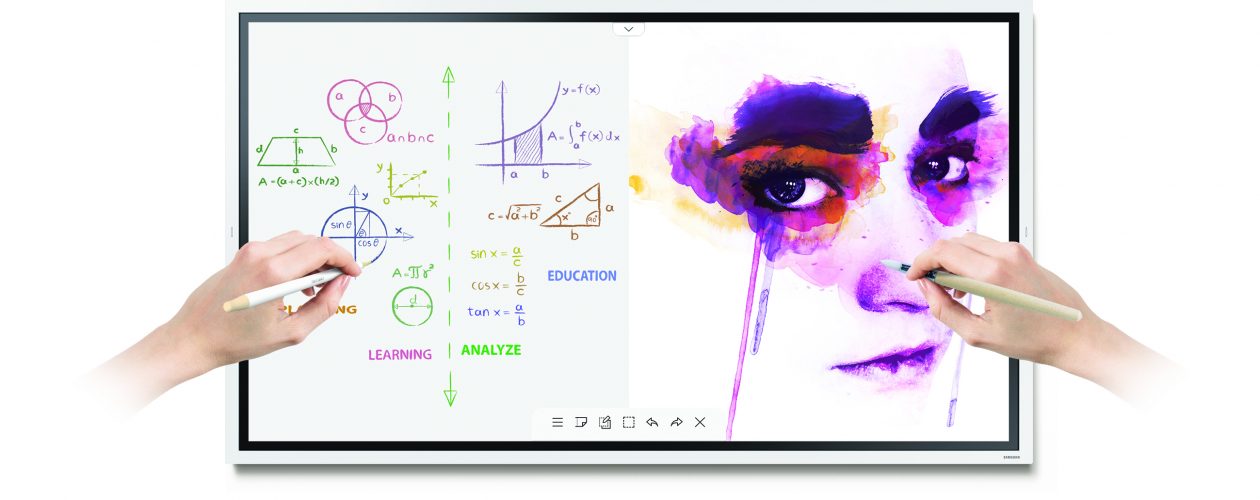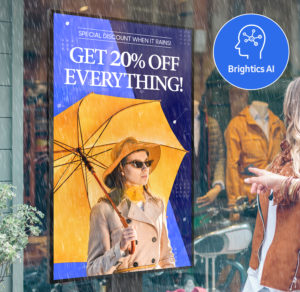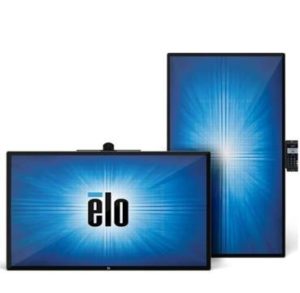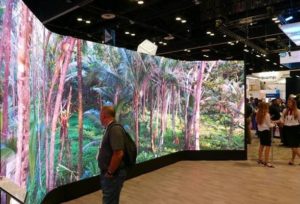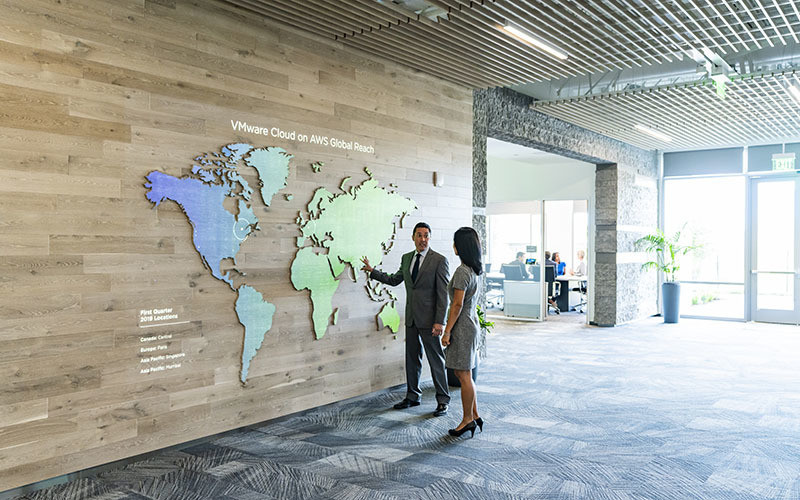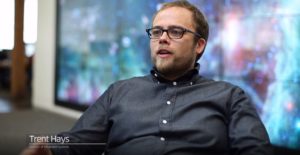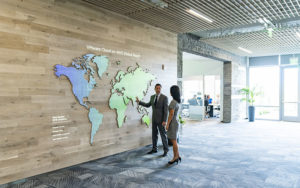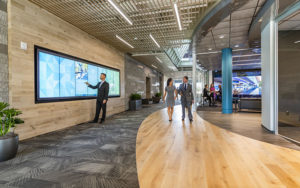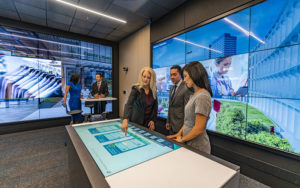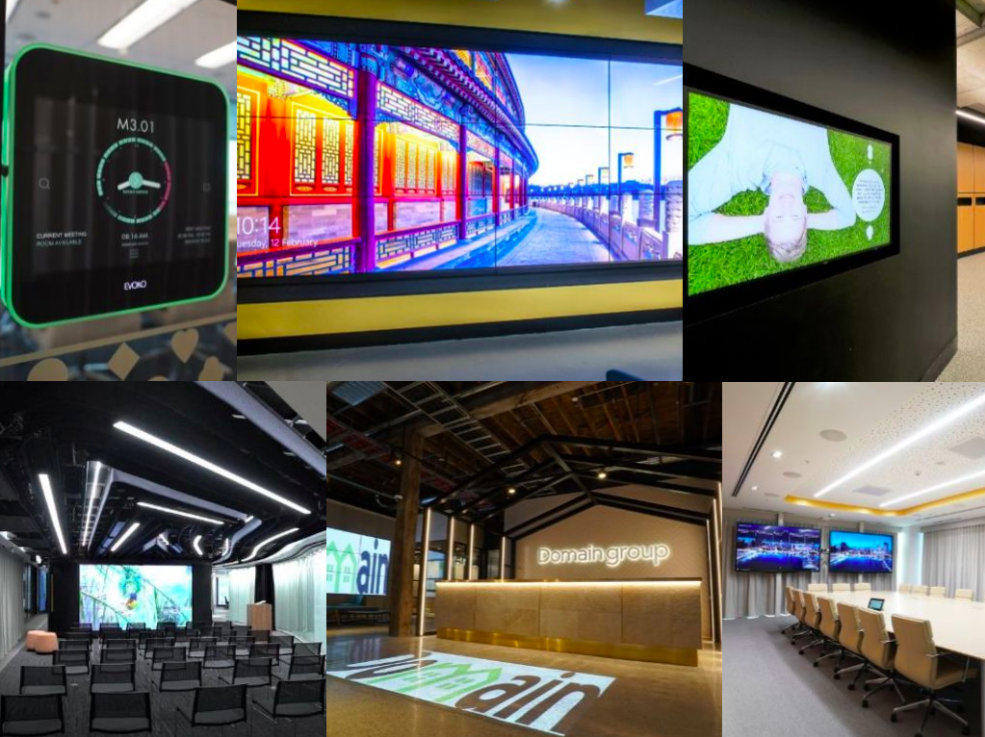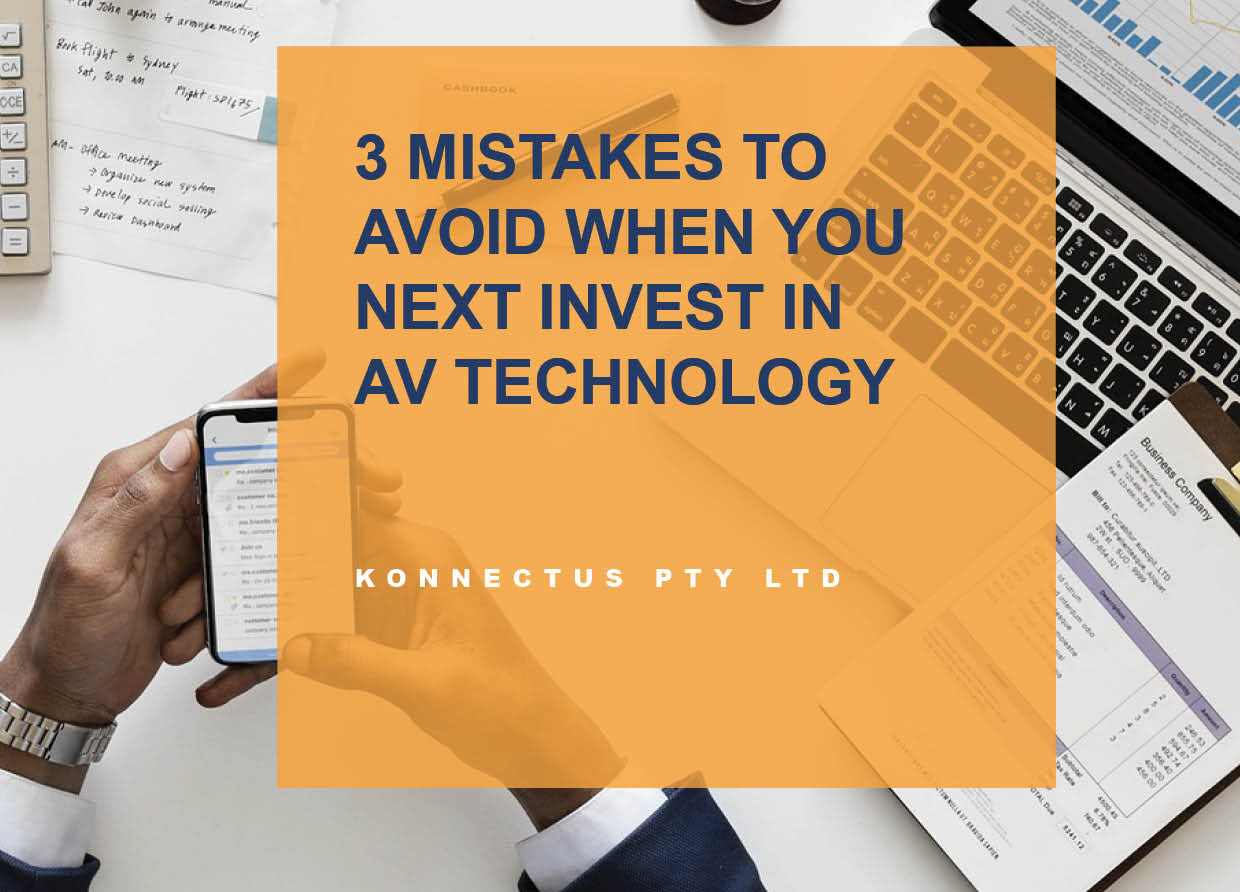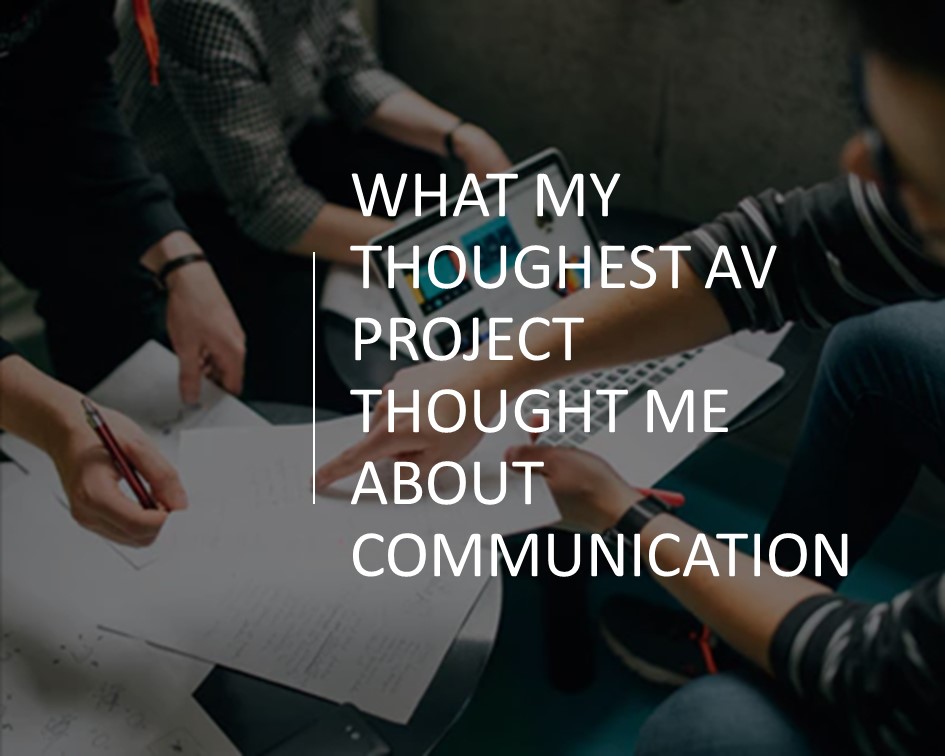Earlier this year, konnectus’ Managing Directro, David Allara, was interviewed by rAVe publications to share his insights and experience working in the AV industry:
1. Describe your journey in the AV industry? How did it start?
I actually did not seek out a career in the AV industry when I got started. In 2005 I had just returned to Sydney, Australia after having lived in New York City for 5 years. I needed a job and didn’t really have much of a network so options were quite limited. There was a sales role with a digital signage wayfinding start up that caught my attention because I had observed a growth trend in New York in that sector. I figured the Australian market would follow the U.S. and that this niche sector could be quite interesting to be a part of.
Unfortunately that digital signage start-up was many years too early for the market in Australia and it never got off the ground. However, that little business gave me a taste for AV, and in 2006 I quickly moved into a sales role with one of the largest commercial AV integration companies in Australia. Whilst in that role I was able to get a feel for how the AV Industry was structured, as well as, gain clarity on a career path that I wanted to pursue. It seemed to me that AV consultants had enormous opportunity to work with all types of organisations on a wide array of AV projects. It was also obvious that AV consultants had access to tremendous amounts of knowledge through their close interactions with Vendors and AV integration companies. The combination of these things was highly attractive to me.
In late 2007 I landed my first AV consultancy role with a mid-size MEP firm based in Sydney. They wanted to grow their AV division and gave me the opportunity to help them do that. I stayed with them for 5 years and really enjoyed the work, as well as, the opportunities to meet and learn from so many brilliant people in the AV industry. In this period I was like a sponge absorbing knowledge and creating many strong professional connections.
Deep down I am an entrepreneur and businessman and as the years went by I had a stronger and stronger desire to create my own business in the AV industry. Ultimately I am very passionate about helping customers, and having the complete freedom to do this is very important to me. In early 2013 my business partner Jonathan and I created konnectus, which is now our vehicle to create customised AV solutions that truly help our diverse range of customers. Over the past 6 years we have built a small and growing team of fantastic AV professionals, and I couldn’t be happier.
2. What do you think are the challenges that are facing a new person who wants to join the industry?
The answer to this question will vary from country to country and also depend on the type of role. In the Australian market there is actually a shortage of labour supply. I speak to business owners in all sectors of the AV industry and whether they are Vendors, Contractors, Consultants or other Service Providers they all have a common frustration……finding good people.
The barriers to entry into this industry are actually quite low. I think the biggest challenge is probably that not enough people really know about it. The AV industry really needs a big marketing boost to be honest. I am convinced that if more people knew what the industry was, and the different career opportunities on offer, we would see more people joining us and boosting both size and quality.
If you love technology then the AV industry is a great place to be.
3. What are the positives of working in this industry?
I think one great thing about this industry is that it is ever evolving. There are best practices and guiding principles which hold true over time. However, apart from those, the technology is constantly changing. New products, new solutions, new ways of doing things. This is very exciting to be a part of.
Our industry requires us to continually learn new things and keep up with the latest trends and technologies. The AV professionals and companies that commit to this ongoing learning are those that will be able to flourish and deliver the best outcomes for customers.
4. What in your opinion would you change in the industry? What are the negatives that are prevalent?
I mentioned earlier that the barriers to entry for someone getting started in the AV industry are very low. Now that was definitely a blessing for me when I got started in AV. I had zero experience or background in the field and had not studied anything similar at school or university. I fumbled along in the beginning and my interest and intrigue kept me going. In order to move forward in the industry I had to acquire knowledge continually through self-study and by making friends with people with experience who could teach me. That is still how I learn with the most effect even today.
There are organisations like AVIXA that provide an ever expanding offering of courses, and many of the manufacturers are also great sources of education. I definitely want to congratulate these organisations on what they are doing and encourage them to continue to grow this focus on education. However, on average, when I compare this industry to others I feel that the level of overall professionalism across all types of companies in the AV industry could definitely be higher. Unfortunately there is no industry requirement that is enforceable that requires people in different roles and positions to be specifically qualified.
In my line of work, which is AV consulting, we do take the time to evaluate the skills and experience and accreditation levels of the teams of contractors that work on our projects. However, we can only provide recommendations in the end and an absence of accreditations does not legally mean anything. Other industries and professions have formal qualifications that are required to practice. It would be great to see this introduced somehow in the AV industry. I think it would do wonders for the industry as a whole because overall levels of quality and professionalism would rise. This would be a huge benefit for the customers we all serve.
5. Describe your ideal client? What do you wish clients to know before hiring you?
This is pretty simple really. Goal number one for myself and the team with all of our potential clients is to build trust. We do this very early on in the process when getting to know prospective clients and spend quite a bit of time making an effort to truly understand needs. Some organisations come to us and immediately jump into technology conversations. Some even go as far as telling us what they want as if we were a waiter in a restaurant taking their order. That approach is back to front and almost always leads to sub optimal outcomes.
Irrespective of the industry or vertical market that a prospective client is in, the organisation is essentially a business that has issues to solve or aspirations they want to achieve. Getting to the truth and clearly understanding these issues is so important in every piece of work we do. You see the AV technology solutions that eventually get designed and implemented are actually just the medium to enable the organisation to solve its issues or achieve its aspirations.
Most successful businesses I know do not invest hundreds of thousands of dollars in technology just for fun. They do it to achieve specific outcomes and measurable returns. So my ideal client is the one that is prepared to work with us with the understanding that our core focus is not the technology itself, but instead to solve their business issues and help them achieve their stated aspirations.
6. If you were going to start over, what would you do differently?
In a word: nothing. I have really enjoyed my career in the AV industry thus far and I still look forward to every day. I am a very optimistic guy with a focus on the present and future. I do reflect on the past as a process for learning but have no regrets or desire to change anything.
7. Describe a typical work day for you. What are your daily disciplines?
As a small business owner I can say there is no such thing as a typical work day. There are many different responsibilities and my time is dedicated to a variety of things that include: working on projects and with clients, managing the team, relationship building and sales, financial management, and strategic building of the business.
I am a very organised person with my work and over the years have found a few formulas that seem to work well for me and keep me productive. Firstly, I always aim to achieve 3 key things every day. I prioritise these 3 things and always tackle the hardest one first. The hardest one is generally the one that requires the deepest levels of thinking and concentration. Secondly, I try to plan my calendar so that each day has a specific overall focus e.g. mainly project work, or mainly sales, or mainly working on strategy etc.
8. Describe the apps and gear that you use daily which makes you more productive?
Our business is completely cloud based, and all of our systems can be accessed from anywhere in the world with an Internet connection. We are using some great individual applications and software platforms, but the overall cloud based set up is the biggest key to enabling myself and the entire konnectus team to be highly productive. It gives us so much flexibility. As consultants we need to be in many different places throughout a typical day, and we also need to be able to maximise time spent working on client projects.
One tool I will say we rely on heavily is Microsoft Skype for Business. Communications is so simple and effective. The whole team uses it on a daily basis – even to communicate and collaborate with external project team members and clients.
9. How do you stay relevant in this industry?
I have to say that I do not have a specific goal of trying to stay relevant in the AV industry. My focus is more on our Customers and Partners, and the most common ways I have of staying relevant to them is through doing great work, catching up with them regularly one on one or in small groups, and attending various events.
As an organisation konnectus definitely has a proactive approach when it comes to building strong relationships with AV industry vendors and AV integrators. We believe that the best outcomes can only be delivered for our customers when the collective teams from konnectus, vendors, and integrations companies work together as one. All the staff invest their time building the relationships through regular one on one catch ups and attending training and events.
Link to the original article:
Spotlight : David Allara, Managing Director, konnectus

